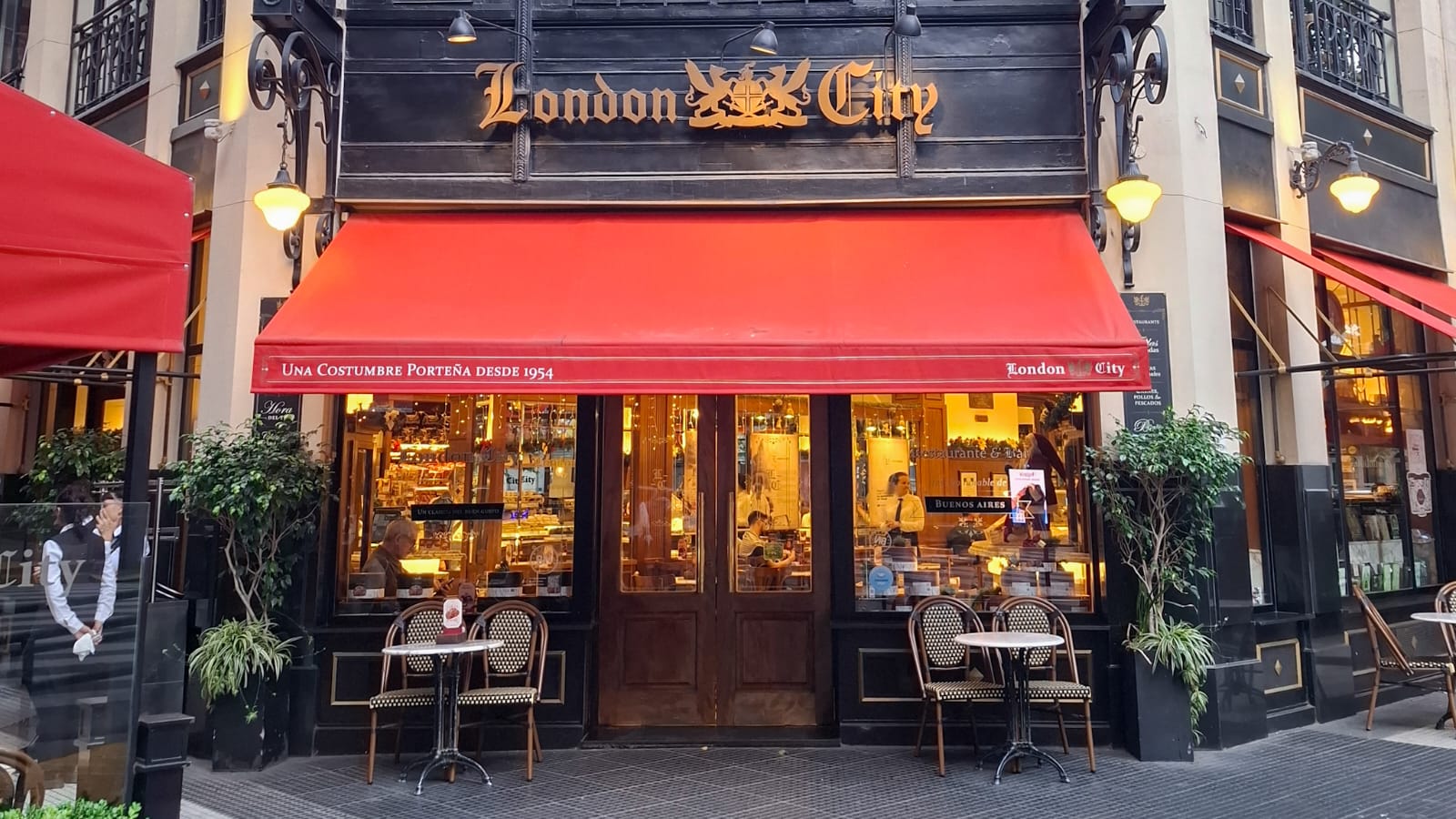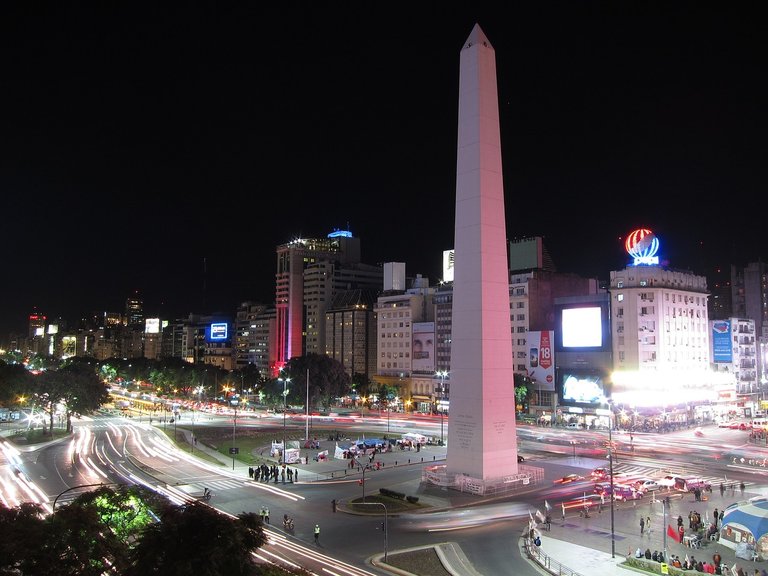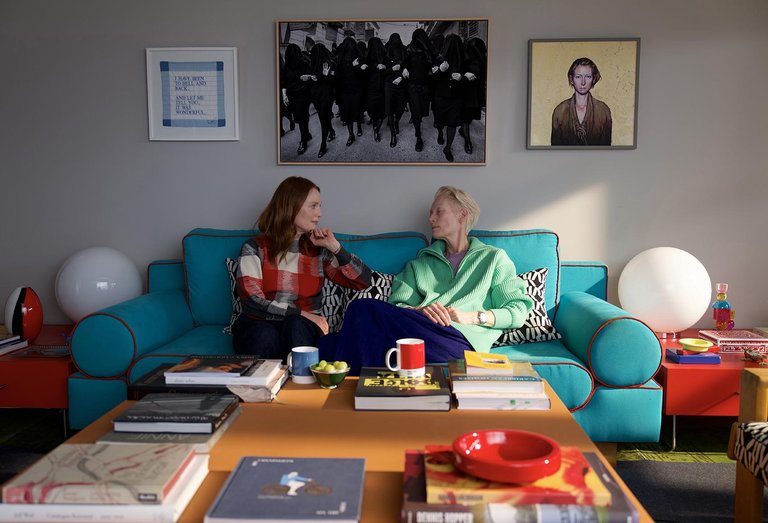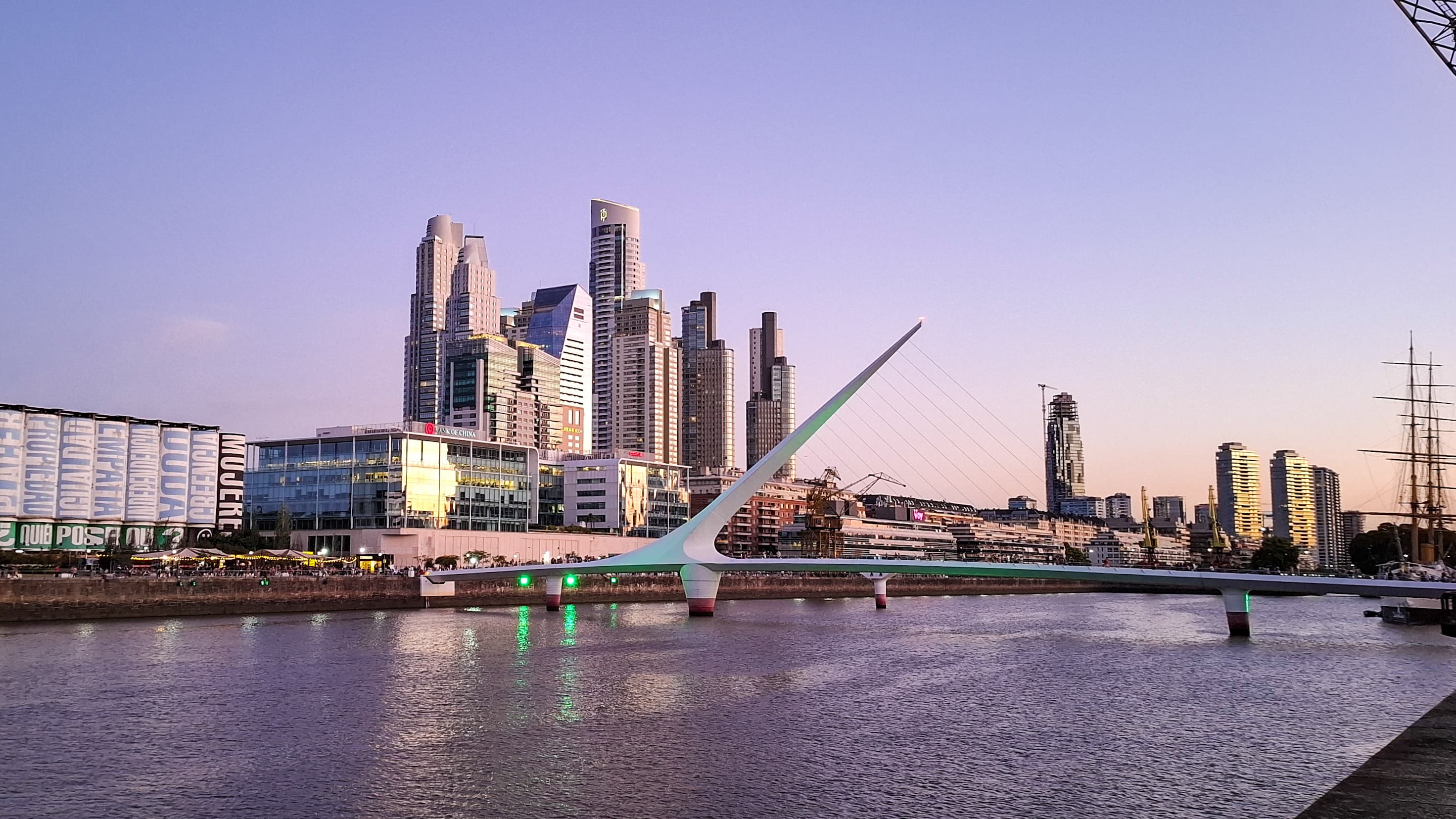
El Puente de la Mujer en Puerto Madero
Whenever I go on a trip or a walk to a place that I really like, an internal conflict arises. A part of me wants to connect with the place, live in the moment, forget about the world and embrace the present with all my senses as if it were the only time I will be in that place. But, precisely because of that last part, another part of me wants to record videos and take photographs, so I can see them again in the future and relive that experience. On my last trip to Buenos Aires it happened to me many times, but there are such beautiful places in that city! How can I resist the temptation to document such spaces? While I am still divided between these two poles, I am going to share with you 5 postcards captured by me in the Argentine capital.
Siempre que voy de viaje o de paseo a un lugar que me gusta mucho me surge un conflicto interno. Una parte de mí quiere conectar con el lugar, vivir el momento, olvidarse del mundo y abrazar el presente con todos los sentidos como si fuese la única vez que voy a estar en ese lugar. Pero, precisamente por eso último, otra parte de mí quiere grabar videos y tomar fotografías, para poder verlas de nuevo en el futuro y revivir esa experiencia. En mi último viaje a Buenos Aires me pasó muchas veces ¡pero es que hay lugares tan hermosos en esa ciudad! ¿cómo voy a resistir la tentación de documentar semejantes espacios? Mientras sigo dividido entre estos dos polos, les voy a compartir 5 postales capturadas por mí en la capital argentina.
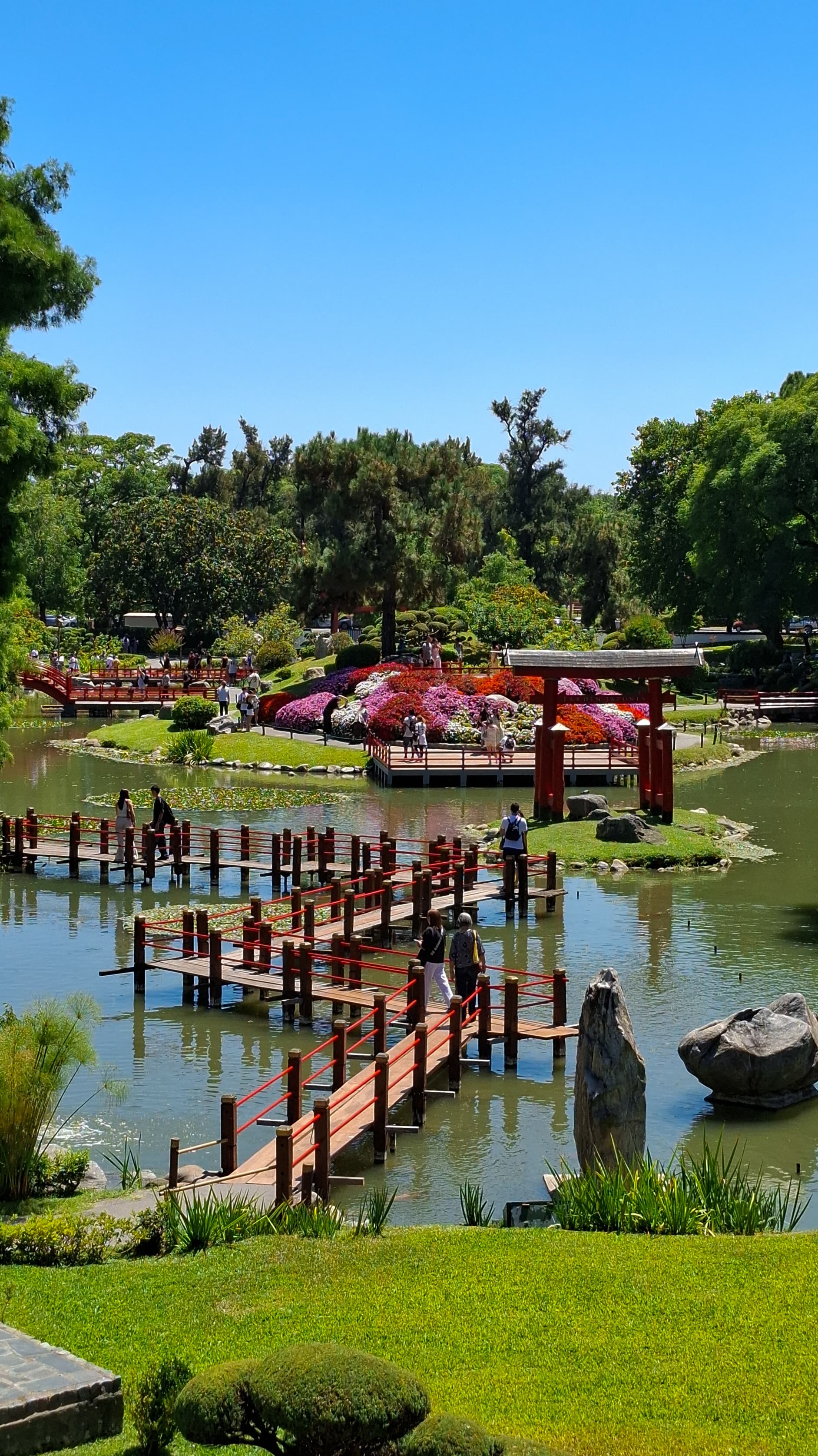
Throughout Buenos Aires there are countless beautiful corners, but the vast majority of them, or the majority of those that I find beautiful, have a mix of three key elements: architecture, art and nature. While it's true that the Argentine capital has hundreds of European-style buildings from the early 20th century that combine very well with the thousands of statues that adorn its streets, it's not the only type of architecture that can be seen nor the only culture that is reflected in their neighborhoods. A good example of what is out of the European classic could be the modern Puerto Madero and the emblematic Puente de la Mujer (cover image of this post), but perhaps one of the most striking is the Japanese Garden. Inaugurated in 1967, the garden was built by the Japanese community residing in the South American country and was later donated to the Municipality of Buenos Aires, in order to symbolize and reflect the closeness between the two countries. Located near the city's Botanical Garden, this corner of Japan in Argentina is a haven of tranquility, lots of green, ancient culture, a space for rest, but also a place to take beautiful photographs like this one that I share with you from the side where there is a building that houses temporary exhibitions, workshops and a cafeteria where you can drink or eat something without having to leave a space that today is considered the city's heritage and one of the must-see destinations for those who visit it.
A lo largo y ancho de Buenos Aires hay un sinfín de rincones hermosos, pero la gran mayoría de ellos, o la mayoría de los que a mí me resultan hermosos, tienen una mezcla de tres elementos claves: arquitectura, arte y naturaleza. Si bien es cierto que la capital argentina tiene centenares de edificios de estilo europeo de principios del siglo XX que combinan muy bien con las miles de estatuas que adornan sus calles, no es el único tipo de arquitectura que puede verse ni la única cultura que se refleja en sus barrios. Un buen ejemplo de lo que se sale de lo clásico europeo puede ser el moderno Puerto Madero y el emblemático Puente de la Mujer (imagen de portada de este post), pero quizás uno de los más llamativos sea el Jardín Japonés. Inaugurado en 1967, el jardín fue construido por la colectividad japonesa residente en el país suramericano y fue donado luego a la Municipalidad de Buenos Aires, con el fin de simbolizar y reflejar la cercanía entre los dos países. Ubicado cerca del Jardín Botánico de la ciudad, este rincón de Japón en Argentina es un remanso de tranquilidad, de mucho verde, de cultura milenaria, un espacio de descanso, pero también un lugar para tomar fotografías hermosas como esta que les comparto desde el extremo final del recorrido en donde hay un edificio que alberga exposiciones temporales, talleres y una cafetería en la que pueden tomar o comer algo sin tener que abandonar un espacio que hoy día es considerado como patrimonio de la ciudad y uno de los destinos imperdibles de quienes la visitan.
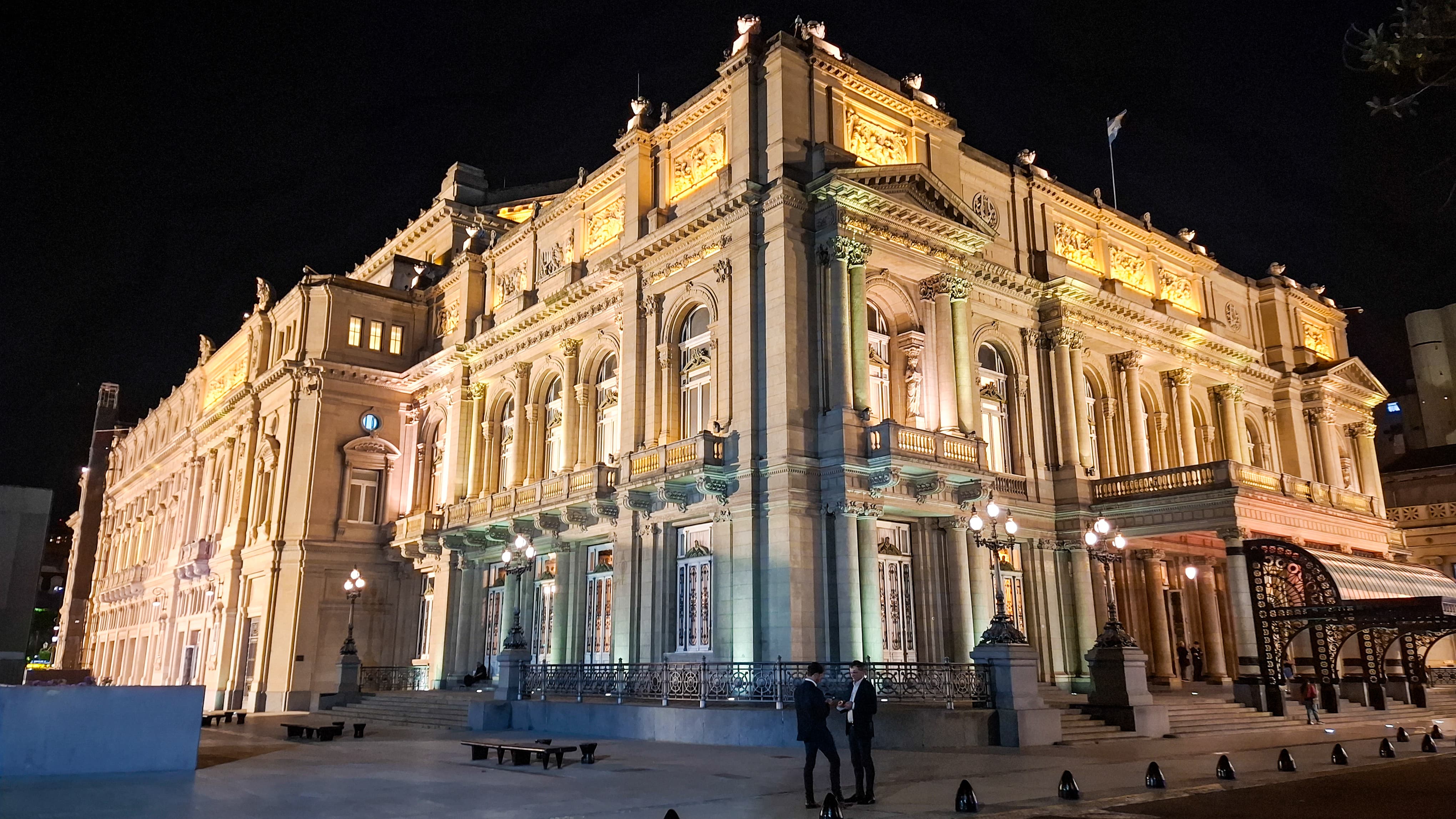.jpeg)
Day or night, whether inside or on its external façade, the historic Teatro Colón - which has more than a century of history - is one of the most beautiful buildings in the city. On this occasion I captured its external view after leaving the central room after a performance of the Ballet Las Bayaderas and I saw why there are people who claim that the building is a spectacle in itself. It is truly a construction that leaves you amazed with its details, its style and its imposing dimensions.
De día o de noche, ya sea en el interior o en su fachada externa, el histórico Teatro Colón - que cuenta con más de un siglo de historia - es uno de los edificios más hermosos de la ciudad. En esta oportunidad capturé su vista externa después de abandonar la sala central tras una función del Ballet Las Bayaderas y comprobé por qué hay personas que aseguran que el edificio es un espectáculo en sí mismo. En verdad es una construcción que te deja asombrado con sus detalles, su estilo y sus imponentes dimensiones.
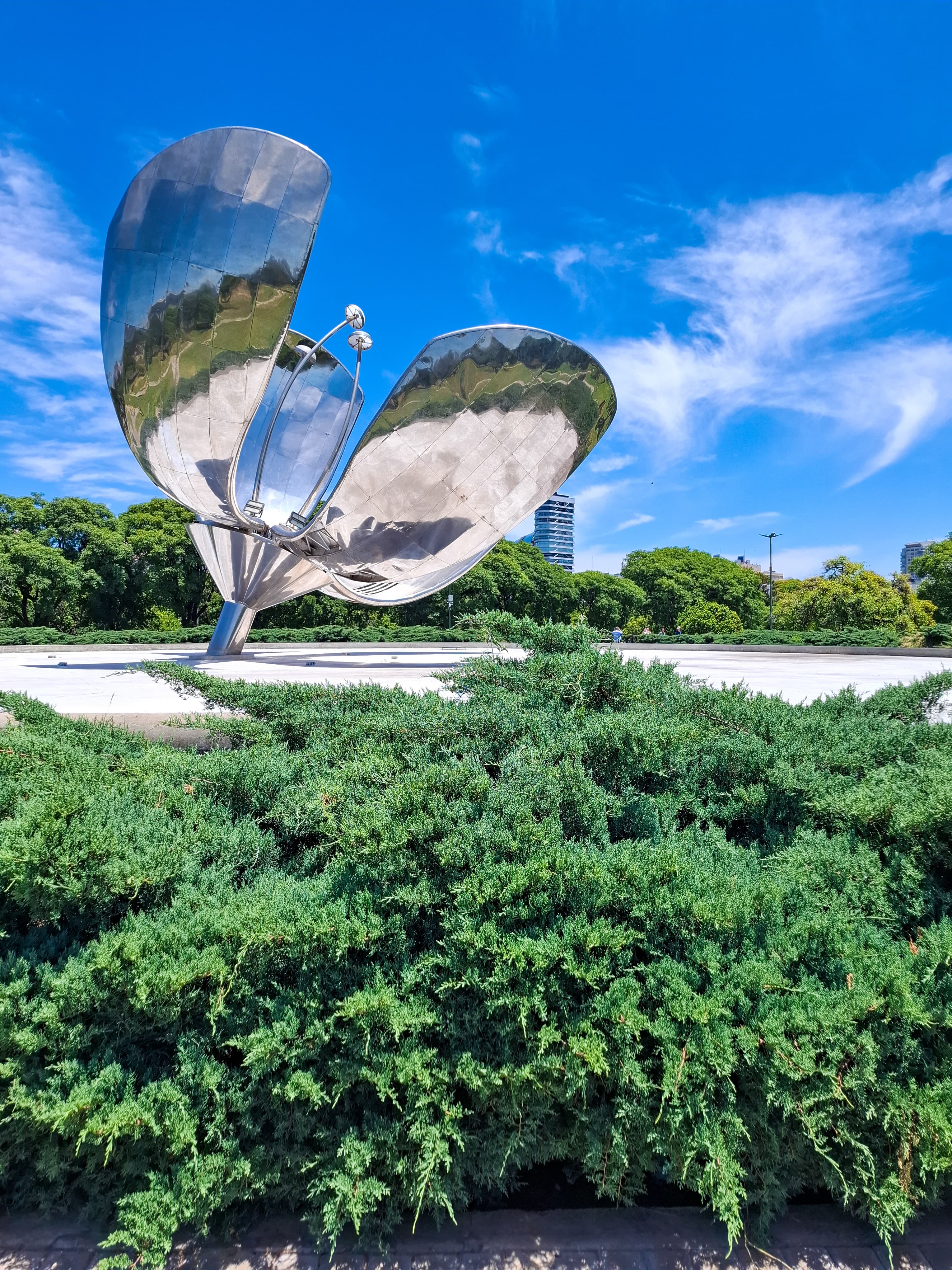.jpeg)
Another example of modern art in the middle of a very classic city is the Floralis Genérica, a sculpture by Eduardo Catalano that seeks to represent all the flowers in the world and is made of stainless steel and an aluminum frame. It may seem somewhat paradoxical that a metal statue exists as a monument to nature, but it's understood that the materials chosen were made thinking about the durability of the work and if you manage to go on a day with clear skies, with lots of sun, you will be able to see why, in the middle of so many trees and so much green, it's a spectacle to see the Floralis erect with its open petals. Currently the statue is not in its best state of conservation, but it still stands out not only against the light blue tones of the sky, but also against the buildings around it. Very close to the park in which this emblematic monument is located despite its modernity, there are two buildings of classic European style that represent ancient architectural and artistic styles: the Museum of Fine Arts, with its extensive collection of works from centuries past; and the Law School of the University of Buenos Aires (UBA) with its imposing Greek façade that refers to the Acropolis. Buenos Aires has always been related to Tango, the Obelisk, the Casa Rosada, Caminito and football, but now it's also usually related to more modern spaces, such as the skyscrapers of Puerto Madero and this wonderful metallic flower.
Otro ejemplo de arte moderno en medio de una ciudad muy clásica es la Floralis Genérica, una escultura de Eduardo Catalano que busca representar a todas las flores del mundo y que está hecha de acero inoxidable y una armazón de aluminio. Puede parecer algo paradójico que exista una estatua metálica como monumento a lo natural, pero se entiende que los materiales escogidos se hicieron pensando en la perdurabilidad de la obra y si logran ir en un día de cielos despejados, con mucho sol, podrán ver por qué, en medio de tantos árboles y tanto verde, es un espectáculo ver erigirse la Floralis con sus pétalos abiertos. Actualmente la estatua no está en su mejor estado de conservación, pero aún así destaca no sólo contra los tonos celestes del cielo, sino contra las construcciones de su alrededor. Muy cerca del parque en el que se encuentra este monumento tan emblemático a pesar de su modernidad, se encuentran dos edificios de estilo europeo clásico y que representan estilos arquitectónicos y artísticos antiguos: el Museo de Bellas Artes, con su extensa colección de obras de siglos pasados; y la escuela de Derecho de la Universidad de Buenos Aires (UBA) con su imponente fachada griega que remite a la Acrópolis. Buenos Aires siempre ha sido relacionada con el Tango, el Obelisco, la Casa Rosada, Caminito y el fútbol, pero ahora también suele relacionarse con espacios más modernos, como los rascacielos de Puerto Madero y esta maravillosa flor metálica.
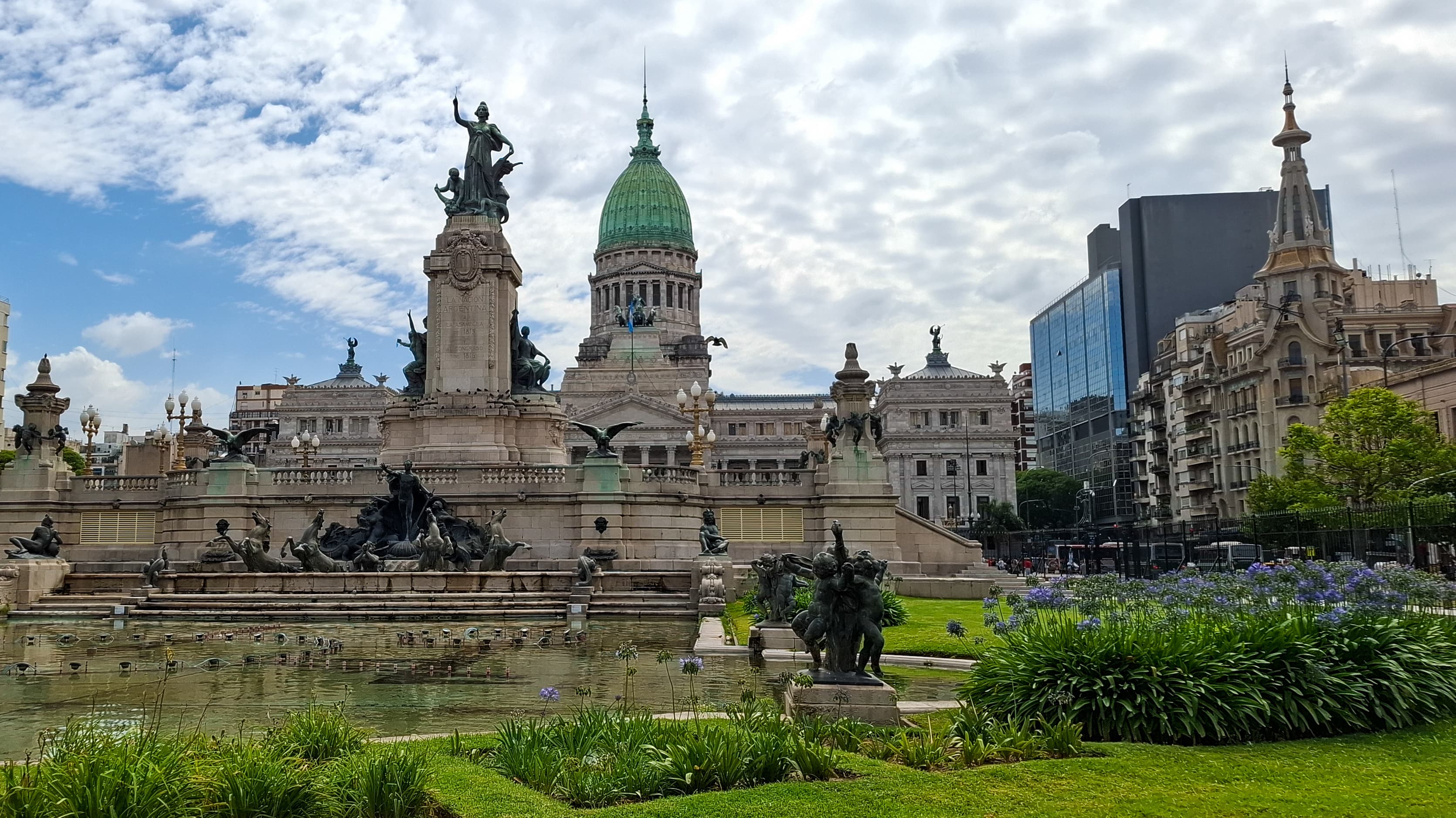.jpeg) Congress Square | La Plaza del Congreso
Congress Square | La Plaza del CongresoThere are three very iconic places in the city of Buenos Aires that are very close, forming what would be an "L": The National Congress Building, the Plaza that is right in front and the El Molino Confitería. They are constructions of great extension and height, but if you know how to position yourself you can manage - as I did in this photo - for all three to appear. In the image we can see the Plaza in the foreground and in the back you can see the Congress dome and the façade of the confectionery (on the right). This is without a doubt one of the most beautiful photographs I took during the weeks I was there in Argentina.
Hay tres lugares muy icónicos de la ciudad de Buenos Aires que se encuentran muy cerca, formando lo que sería una "L": El Edificio del Congreso Nacional, la Plaza que está justo en frente y la Confitería El Molino. Son construcciones de gran extensión y altura, pero si uno sabe ubicarse puede conseguir - como yo lo hice en esta foto - que aparezcan los tres. En la imagen podemos ver la Plaza en primer plano y en la parte de atrás se ven la cúpula del Congreso y la fachada de la confitería (a la derecha) Esta es sin duda una de las fotografías más bonitas que tomé durante las semanas que estuve en Argentina.
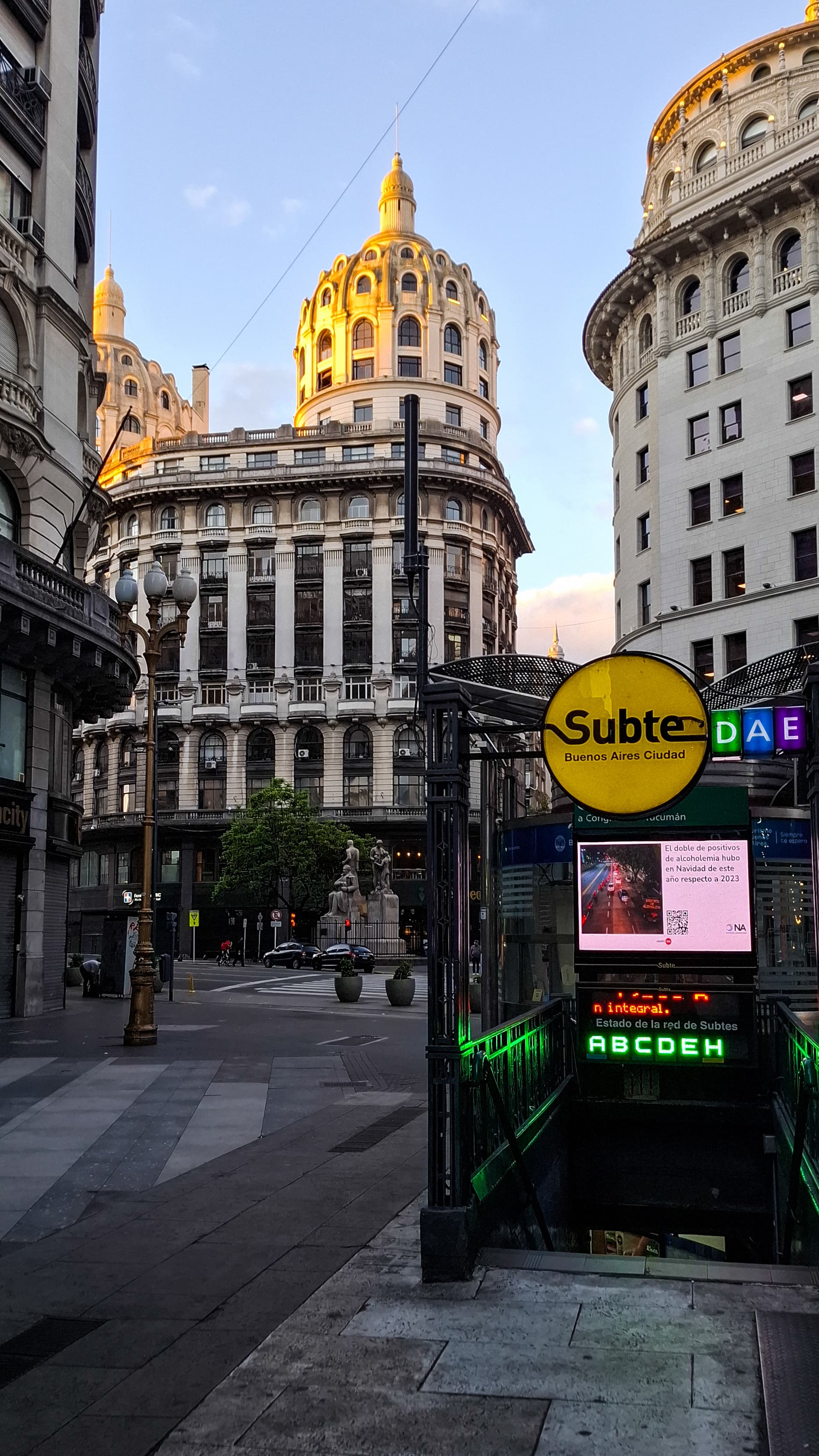.jpeg)
Now, you don't always need a spectacular building, a skyscraper, a beautiful garden or a historical landmark to make a photo beautiful. What they say that when taking a good photograph the photographer's eye matters more than the camera lens or the landscape is very true. Anyone can take a beautiful photo of Av. 9 de Julio, but I like it best when an everyday corner is transformed into something beautiful thanks to the focus of the person capturing the image. Walking through the city center, surrounded by people, in the middle of the intersection of buses and shops doesn't seem to be an ideal moment to take a photo and yet, that is the context of this last postcard. The entrances to the Buenos Aires Subway remind me a little of some entrances to the New York Subway, but more than that I wanted to capture in an image the modern aspect of the city (the subway) with the classic (the façade in the background), the artificial light (the access screen) with the natural light (at dusk that is reflected in the dome), the bright colors, red, yellow and green, with the most neutral tones of the background and that apparent calm of the street with the movement of the trains that cross the city beneath its streets. It's a random corner of the center of Buenos Aires, but this photo - for me - has a certain magic that makes it as memorable as the other photos in this post. For you, which of these is your favorite postcard of the Argentine capital and why? I read you in the comments.
Ahora bien, no siempre hace falta un edificio espectacular, un rascacielos, un jardín hermoso o un hito histórico para que una foto resulte bonita. Aquello que dicen que a la hora de tomar una buena fotografía importa más el ojo del fotógrafo que el lente de la cámara o el paisaje, es algo muy cierto. Cualquiera puede tomar una foto hermosa de la Av. 9 de Julio, pero me gusta más cuando un rincón cotidiano se transforma en algo hermoso gracias al enfoque de quien captura la imagen. Caminar por el centro de la ciudad, rodeado de gente, en medio del cruce de buses y comercios no pareciera ser un momento ideal para lanzar una foto y sin embargo, ese es el contexto de esta última postal. Las entradas del Subte de Buenos Aires me recuerdan un poco algunos accesos del Metro de Nueva York, pero más que eso quise captar en una imagen lo moderno de la ciudad (el metro) con lo clásico (la fachada del fondo), la luz artificial (la pantalla del acceso) con la luz natural (al atardecer que se refleja en la cúpula), los colores vivos, rojo, amarillo y verde, con los tonos más neutros del fondo y esa aparente calma de la calle con el movimiento de los trenes que atraviesan la ciudad por debajo de sus calles. Es un rincón cualquiera del centro de Buenos Aires, pero esta foto - para mí - tiene cierta magia que la hace tan memorable como las demás fotos de este post. Para ti, ¿cuál de todas estas es tu postal favorita de la capital argentina y por qué? Te leo en los comentarios.
